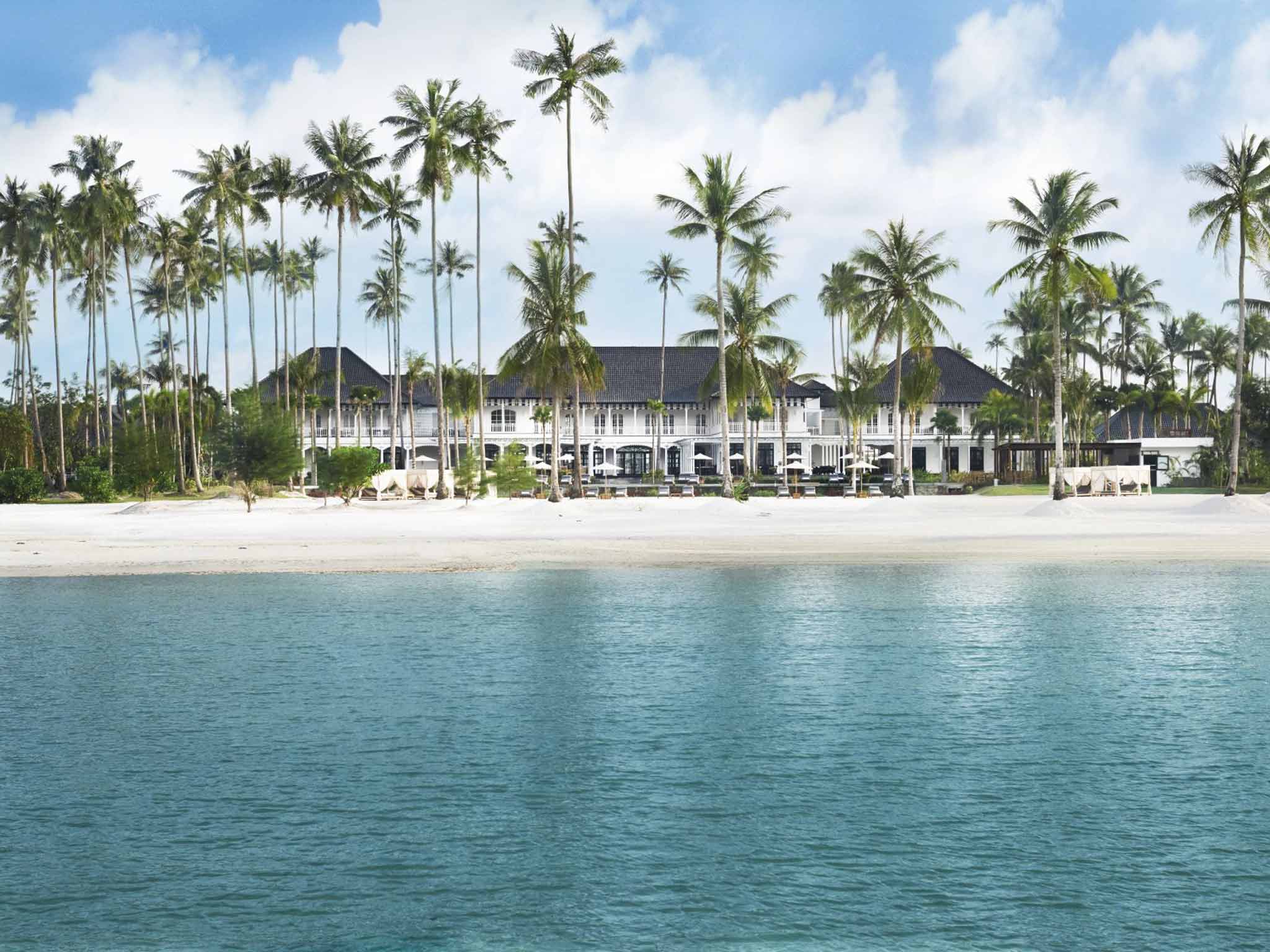The Independent's journalism is supported by our readers. When you purchase through links on our site, we may earn commission.
Bintan: the Indonesian paradise is an Asian holiday gem
Once a home to buccaneers and smugglers, Daniel Scheffler visits the expanding tropical getaway formerly known as 'Pirate Island'

"There is a local saying that you're either brought to Bintan by a woman or a ship – in my case it was the latter," says Swiss-born Marc Thalmann. The former oil engineer moved from Geneva to this small Indonesian island – arriving by ferry from Singapore in 1988 – where he opened Mutiara Beach Resort soon after.
"Bintan is interesting. For a few centuries it was the power core of the Malay Archipelago – including what is now Singapore – as the central trading post between China and India, but then it vanished from history's radar to become a sleepy backwater infested by pirates and smugglers," says Marc. In the 12th century, the island of Bintan, roughly one-and-a-half times the size of Singapore, was known as "Pirate Island", its prime location ideal for Malay pirates looting passing ships.
I meet Marc in more serene circumstances on his private beach, next to 20 acres of coconut plantation and a mangrove river. The setting is beguiling – what seems like endless white sand and clear water. "The principal asset here is the natural beauty and then, of course, the convenient access," he says.
The location of Bintan, just 50 miles south of Singapore's gleaming skyscrapers and man-made beaches, is a major factor in the island's revitalisation. The island, part of the seven-strong Riau Archipelago, is being promoted as a contender for Bali's tropical fantasy crown. With the easy access to Singapore, as well as Malaysia and the rest of Indonesia, Bintan is coming back to the fore. Surrounded by tourmaline waters and a liberal sprinkling of smaller isles, it is the quintessential palm-tree beach haven, which in recent years has been a secret hideaway for Singaporeans and expatriates.
Beyond the beaches is a hinterland of tropical forest and I venture inland to meet Stuart Perkins, who owns ultralight flying company Air Adventures Asia. His office, just a few minutes' drive from the biggest real estate development on the island, Bintan Resorts, is where we embark his seaplane for an aerial tour of the island. "From above you'll see the incredible landscapes: coral-wrapped reefs, the white sandy beaches and traditional fishing villages," Stuart tells me.
The ultralight ascends quickly and the island recedes to a green haven below us. Stuart, who has been on the island for two years, has plans to open a restaurant in the Bintan Resorts enclave, close to the Sanchaya resort. From the air, the newly opened Sanchaya looks every bit the idyllic getaway, with private villas strewn along the beach. As one of the headline developments, it is bringing old-school hotel glamour back to the business, and to the island: it's the first luxury development on Bintan in 10 years, but certainly not the last. Several new high-end developments are taking shape close by, among them Alila Villas, which has previously made waves in Bali.
Back on terra firma, I walk along the Sanchaya's manicured beach. Even though there are three resorts in the vicinity, none blot my view. The resort is committed to ensuring that for most of their time on the island, guests will feel secluded – even with eight resorts in the pipeline in the area. Two big developments opening next year include Lagoi Bay and Treasure Bay: the former specialising in environmentally sensitive, serviced villas and the latter as an all-inclusive retreat, along with plenty of shops and dining options.
While luxury resorts might proliferate in this enclave, the rest of the island is home to a population of around 335,000, including Orang Laut, a small fishing community that lives in coastal houses built on stilts scattered all around the archipelago. I happen upon a collection of these homes, known as sapaos, just a few minutes' drive south. The walls are made from local tree bark, the thatched roof from nipa palm fronds. Close by, I spot monitor lizards and colourful mangrove snakes.
For now at least, Bintan has the best of everything. I find my days filled with all the activities a tropical getaway should supply: a private spot to kite surf, shopping in the buzzing little port of Tanjung Pinang and the tiny fishing village of Kawal where I eat grilled fish paste in a palm leaf. Is this the next Bali? I hope it keeps some of its secrets to itself.
Getting there
Daniel Scheffler flew from Heathrow to Singapore with British Airways (0844 493 0787; ba.com) and travelled from Singapore to the island with Bintan Resort Ferries (00 65 6542 4369; booking.brf.com.sg)
Staying there
The Sanchaya (00 62 770 692200; thesanchaya.com). Villas start at US$520 (£347), room only.
Mutiara Beach Guesthouse & Aroma River Spa (00 62 770 691 931; mutiarabintan.com). Bungalows start at S$40 (£19), including breakfast.
Visiting there
Air Adventures Asia (00 62 65 93 3570; airadventuresasia.com) offers ultralight journeys on the island starting at S$155 (£75)pp
More information
Subscribe to Independent Premium to bookmark this article
Want to bookmark your favourite articles and stories to read or reference later? Start your Independent Premium subscription today.

Join our commenting forum
Join thought-provoking conversations, follow other Independent readers and see their replies